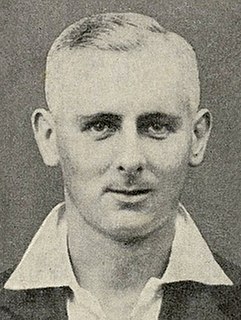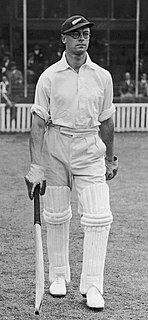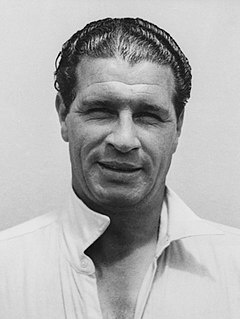| Personal information | ||||||||||||||||||||||||||||||||||||||||||||||||||||||||||||||||||
|---|---|---|---|---|---|---|---|---|---|---|---|---|---|---|---|---|---|---|---|---|---|---|---|---|---|---|---|---|---|---|---|---|---|---|---|---|---|---|---|---|---|---|---|---|---|---|---|---|---|---|---|---|---|---|---|---|---|---|---|---|---|---|---|---|---|---|
| Full name | Richard Owen Collinge | |||||||||||||||||||||||||||||||||||||||||||||||||||||||||||||||||
| Born | 2 April 1946 Wellington, New Zealand | |||||||||||||||||||||||||||||||||||||||||||||||||||||||||||||||||
| Batting | Right-handed | |||||||||||||||||||||||||||||||||||||||||||||||||||||||||||||||||
| Bowling | Left-arm medium-fast | |||||||||||||||||||||||||||||||||||||||||||||||||||||||||||||||||
| Role | Bowler | |||||||||||||||||||||||||||||||||||||||||||||||||||||||||||||||||
| International information | ||||||||||||||||||||||||||||||||||||||||||||||||||||||||||||||||||
| National side |
| |||||||||||||||||||||||||||||||||||||||||||||||||||||||||||||||||
| Test debut(cap 102) | 22 January 1965 v Pakistan | |||||||||||||||||||||||||||||||||||||||||||||||||||||||||||||||||
| Last Test | 24 August 1978 v England | |||||||||||||||||||||||||||||||||||||||||||||||||||||||||||||||||
| ODI debut(cap 2) | 11 February 1973 v Pakistan | |||||||||||||||||||||||||||||||||||||||||||||||||||||||||||||||||
| Last ODI | 17 July 1978 v England | |||||||||||||||||||||||||||||||||||||||||||||||||||||||||||||||||
| Domestic team information | ||||||||||||||||||||||||||||||||||||||||||||||||||||||||||||||||||
| Years | Team | |||||||||||||||||||||||||||||||||||||||||||||||||||||||||||||||||
| 1963/64–1969/70 | Central Districts | |||||||||||||||||||||||||||||||||||||||||||||||||||||||||||||||||
| 1967/68–1974/75 | Wellington | |||||||||||||||||||||||||||||||||||||||||||||||||||||||||||||||||
| 1975/76–1977/78 | Northern Districts | |||||||||||||||||||||||||||||||||||||||||||||||||||||||||||||||||
| Career statistics | ||||||||||||||||||||||||||||||||||||||||||||||||||||||||||||||||||
| ||||||||||||||||||||||||||||||||||||||||||||||||||||||||||||||||||
Source: Cricinfo, 17 October 2016 | ||||||||||||||||||||||||||||||||||||||||||||||||||||||||||||||||||
Richard Owen Collinge (born 2 April 1946) is a former New Zealand cricketer, who played 35 Tests and 15 ODIs. He was New Zealand Cricket Almanack Player of the Year in 1971.
He played domestic cricket for three different sides. He made his first class debut for Central Districts in 1963/64 and played for them until 1969/70 before moving to Wellington from 1967/68 to 1974/75 and finally Northern Districts till 1977/78. In 163 first class matches he took 524 wickets, with a best of 8-64, at an average of 24.41.
A tall, strongly-built man, Collinge bowled left arm fast medium, ending his long run with both arms stretching upwards before delivering the ball. [1] He pitched the ball up and relied on late movement. He was a good foil for the often wild express pace of the young Richard Hadlee and was instrumental in helping Hadlee bring New Zealand's first Test victory over England in 1977-8, with figures of 3-42 and 3-45. [2] The fast inswinger with which he bowled Geoff Boycott at Wellington began England's collapse to 64 all out and brought the crowd to fever pitch.[ citation needed ]
He made his Test debut in 1965 and played his last match at Lord's in 1978. [3] [4] His best Test and One Day International bowling figures were both against India in 1975–76, with 6 for 63 and 5 for 23 respectively. At the time of his retirement, he was New Zealand's greatest wicket-taker, with 116 wickets at 29.25 each, despite missing many matches during his 13-year test career.[ citation needed ]
He could also be a useful batsman. At Auckland in 1972–73, Collinge scored 68 not out for New Zealand against Pakistan; this was the highest score ever made by a number 11 in a Test match at the time. That innings also formed part of the record last-wicket stand in Tests: 151 put on with Brian Hastings in 155 minutes. [5]

Sir Curtly Elconn Lynwall Ambrose KCN is an Antiguan former cricketer from who played 98 Test matches for the West Indies. Widely acknowledged as one of the greatest fast bowlers of all time, he took 405 Test wickets at an average of 20.99 and topped the ICC Player Rankings for much of his career to be rated the best bowler in the world. His great height—he is 6 feet 7 inches (2.01 m) tall—allowed him to make the ball bounce unusually high after he delivered it; allied to his pace and accuracy, it made him a very difficult bowler for batsmen to face. A man of few words during his career, he was notoriously reluctant to speak to journalists. He was chosen as one of the Wisden Cricketers of the Year in 1992; after he retired he was entered into the International Cricket Council Hall of Fame and selected as one of West Indies all-time XI by a panel of experts.

Sir Richard John Hadlee is a New Zealand former cricketer. Hadlee is widely regarded as one of the greatest fast bowlers and all-rounders in cricket history.

Shane Edward Bond is a New Zealand cricket coach and former cricketer and present bowling coach of Mumbai Indians, described as "New Zealand's best fast bowler since Sir Richard Hadlee". He represented New Zealand in Test, ODI and Twenty20 International cricket and played for Canterbury in New Zealand domestic cricket and Warwickshire in English domestic cricket. A right-arm fast bowler, his fastest recorded delivery was clocked at 156.4 km/h against India in the 2003 World Cup.

Hedley Verity was a professional cricketer who played for Yorkshire and England between 1930 and 1939. A slow left-arm orthodox bowler, he took 1,956 wickets in first-class cricket at an average of 14.90 and 144 wickets in 40 Tests at an average of 24.37. Named as one of the Wisden Cricketers of the Year in 1932, he is regarded as one of the most effective slow left-arm bowlers to have played cricket. Never someone who spun the ball sharply, he achieved success through the accuracy of his bowling. On pitches which made batting difficult, particularly ones affected by rain, he could be almost impossible to bat against.
Jeffrey Robert Thomson is a former Australian cricketer. Known as "Thommo", he is considered by many in the sport to be the fastest bowler of cricket history.
John Brian Statham, was an English professional cricketer from Gorton, in Manchester, who played for Lancashire County Cricket Club from 1950 to 1968 and for England from 1951 to 1965. As an England player, he took part in nine overseas tours from 1950–51 to 1962–63. He specialised as a right arm fast bowler and was noted for the consistent accuracy of his length and direction.
Sir Wesley Winfield Hall is a Barbadian former cricketer and politician. A tall, strong and powerfully built man, Hall was a genuine fast bowler and despite his very long run up, he was renowned for his ability to bowl long spells. Hall played 48 Test matches for the West Indies from 1958 to 1969. Hall's opening bowling partnership with fellow Barbadian Charlie Griffith was a feature of the strong West Indies teams throughout the 1960s. Hall was one of the most popular cricketers of his day and was especially popular in Australia, where he played two seasons in the Sheffield Shield with Queensland.

Walter Arnold Hadlee was a New Zealand cricketer and Test match captain. He played domestic first-class cricket for Canterbury and Otago. Three of his five sons, Sir Richard, Dayle and Barry played cricket for New Zealand. The Chappell–Hadlee Trophy, which is competed for by Test teams from New Zealand and Australia is named in honour of the Hadlee family and the Australian Chappell family.
Murray George Webb is a prominent New Zealand caricature artist and a former New Zealand Test cricketer.

Ewen John Chatfield is a former New Zealand cricketer. A medium-pace bowler, though Chatfield played 43 Tests and 114 One Day Internationals for his country, he is also remembered for having been hit in the head by a ball while batting, causing him to collapse and need resuscitation.

Robert Smith Cunis played 20 Test matches for New Zealand as a pace bowler between 1964 and 1972, and was later coach of the New Zealand national team from 1987 to 1990. His son Stephen played cricket for Canterbury between 1998 and 2006.
David Robert O'Sullivan played 11 Tests and three One Day Internationals for New Zealand between 1973 and 1976. He played first-class cricket from 1971 to 1985.

Ernest Raymond Herbert Toshack was an Australian cricketer who played in 12 Tests from 1946 to 1948. A left arm medium paced bowler known for his accuracy and stamina in the application of leg theory, Toshack was a member of Don Bradman's "Invincibles" that toured England in 1948 without being defeated. Toshack reinforced the Australian new ball attack of Ray Lindwall and Keith Miller.

John Cowie was a New Zealand cricketer who played in nine Tests from 1937 to 1949. His Test opportunities were restricted by New Zealand's limited programme, and his cricket career was interrupted by World War II from 1939 to 1945. Following the 1937 tour of England, Wisden commented: "Had he been an Australian, he might have been termed a wonder of the age."
Dayle Robert Hadlee is a New Zealand former cricketer who played in 26 Tests and 11 ODIs from 1969 to 1978. He is the son of Walter Hadlee, the older brother of Sir Richard Hadlee and the younger brother of Barry Hadlee.

Timothy Grant Southee, is a New Zealand international cricketer who plays all forms of the game. He is a right-arm fast-medium bowler and a hard-hitting lower order batsman. The third New Zealand bowler to take 300 test wickets,he is also the current vice-captain of the international team. He was one of New Zealand's youngest cricketers, debuting at the age of 19 in February 2008. On his Test debut against England he took 5 wickets and made 77 off 40 balls in the second innings. He plays for Northern Districts in the Plunket Shield, Ford Trophy and Super Smash as well as Northland in the Hawke Cup. He was named as New Zealand's captain for the first T20I against West Indies in place of Kane Williamson, who was rested for that game. The Blackcaps won that match by 47 runs.
The New Zealand cricket team toured England in the 1949 season. The team was the fourth official touring side from New Zealand, following those in 1927, 1931 and 1937, and was by some distance the most successful to this date. The four-match Test series with England was shared, every game ending as a draw, and of 35 first-class fixtures, 14 were won, 20 drawn and only one lost.
The New Zealand cricket team toured India in the 1964-65 cricket season. They played four Test matches against the Indian cricket team, with India winning one match and the other three being drawn.
The Pakistan national cricket team toured New Zealand in January and February 1973 and played a three-match Test series against the New Zealand national cricket team. Pakistan won the series 1-0. It was their first Test series win outside Pakistan. In addition, a Limited Overs International (LOI) took place between the second and third Tests; this match was the inaugural LOI of both teams.